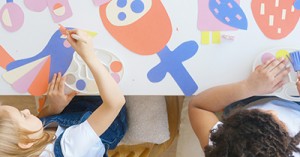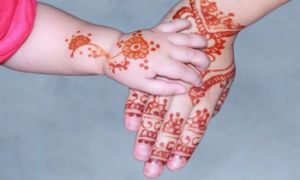Child-led inquiry maps are visual tools that capture and scaffold children’s natural curiosity, questions, and investigations. They’re especially powerful in early learning settings where authentic voice, agency, and co-construction are central. The following article provides information on What Is a Child-Led Inquiry Map?, Core Elements to Include, How To Implement a Child-Led Inquiry Map and more.
What Is a Child-Led Inquiry Map?
A child-led inquiry map is:
- A visual representation of a child or group’s evolving questions, ideas, and discoveries.
- Rooted in children's interests, not adult-imposed themes.
- Flexible and dynamic, often branching out as new provocations or questions arise.
- A documentation tool that supports educators in tracking learning pathways, linking to curriculum outcomes, and amplifying child voice.
Core Elements to Include
| Element | Description |
|---|---|
| Central Question or Spark | The child’s initial wonder or observation (e.g., “Why do snails have shells?”) |
| Sub-questions | Follow-up queries that deepen or broaden the inquiry |
| Children’s Theories | Documented ideas, hypotheses, or explanations from the child |
| Evidence & Exploration | Photos, drawings, transcripts, or artifacts from investigations |
| Connections to Learning Areas | Links to EYLF outcomes, developmental domains, or curriculum goals |
| Next Steps | Suggested provocations, materials, or experiences to extend inquiry |
Formats You Can Use
- Mind Map Style: Central idea with branching questions and discoveries.
- Flow Chart: Sequential steps showing how inquiry evolved.
- Web of Wonder: A collaborative map with multiple children’s questions interlinked.
- Journey Timeline: Chronological documentation of inquiry phases.
How To Implement a Child-Led Inquiry Map
Implementing a Child-Led Inquiry Map is a powerful way to honour children’s curiosity, amplify their voice, and scaffold meaningful learning. Here’s a step-by-step guide:
1. Observe the Spark
- Watch for spontaneous questions, gestures, or fascinations.
- Example: A toddler repeatedly points to the moon during outdoor play.
2. Document the Wonder
- Capture the initial inquiry in the child’s own words or actions.
- Create a central node on your map (e.g., “Why does the moon follow me?”).
- Use visuals, quotes, or drawings to anchor the map.
3. Invite Expansion
- Ask open-ended questions to deepen the inquiry.
- Encourage peer dialogue, family input, and multi-modal expression.
- Add branches for sub-questions, theories, and emotional reflections.
4. Curate Evidence
- Collect photos, transcripts, artwork, and play-based artifacts.
- Use trauma-informed lenses: validate emotional themes, and avoid forced closure.
- Include sensory, cultural, and emotional dimensions of the inquiry.
5. Link to Learning
- Map connections to EYLF v2.0 outcomes, developmental domains, or well-being goals.
- Example: Outcome 4 – “Children are confident and involved learners.”
6. Plan Responsive Extensions
- Design provocations or experiences that build on the inquiry.
- Include comfort strategies, cultural stories, or regulation tools if needed.
- Example: Create a moon-themed sensory tray or invite a family member to share a lunar tradition.
Practical Tips
- Use children’s actual words as captions or quotes.
- Include visuals (photos, drawings) to support non-verbal expression.
- Allow for emotional themes (e.g., “I wonder why people cry”) and scaffold gently.
- Invite family input to enrich cultural perspectives.
- Ensure flexibility—not all inquiries need closure or answers.
Further Reading
Inquiry Based Learning For Toddlers
Inquiry Based Learning In Early Childhood
What Is Pedagogy In Early Childhood
Child-Centered Learning
Project-Based Learning In Early Childhood
Inquiry Based Learning Questions Posters







 Here is the list of the EYLF Learning Outcomes that you can use as a guide or reference for your documentation and planning. The EYLF
Here is the list of the EYLF Learning Outcomes that you can use as a guide or reference for your documentation and planning. The EYLF The EYLF is a guide which consists of Principles, Practices and 5 main Learning Outcomes along with each of their sub outcomes, based on identity,
The EYLF is a guide which consists of Principles, Practices and 5 main Learning Outcomes along with each of their sub outcomes, based on identity, This is a guide on How to Write a Learning Story. It provides information on What Is A Learning Story, Writing A Learning Story, Sample
This is a guide on How to Write a Learning Story. It provides information on What Is A Learning Story, Writing A Learning Story, Sample One of the most important types of documentation methods that educators needs to be familiar with are “observations”. Observations are crucial for all early childhood
One of the most important types of documentation methods that educators needs to be familiar with are “observations”. Observations are crucial for all early childhood To support children achieve learning outcomes from the EYLF Framework, the following list gives educators examples of how to promote children's learning in each individual
To support children achieve learning outcomes from the EYLF Framework, the following list gives educators examples of how to promote children's learning in each individual Reflective practice is learning from everyday situations and issues and concerns that arise which form part of our daily routine while working in an early
Reflective practice is learning from everyday situations and issues and concerns that arise which form part of our daily routine while working in an early Within Australia, Programming and Planning is reflected and supported by the Early Years Learning Framework. Educators within early childhood settings, use the EYLF to guide
Within Australia, Programming and Planning is reflected and supported by the Early Years Learning Framework. Educators within early childhood settings, use the EYLF to guide When observing children, it's important that we use a range of different observation methods from running records, learning stories to photographs and work samples. Using
When observing children, it's important that we use a range of different observation methods from running records, learning stories to photographs and work samples. Using This is a guide for educators on what to observe under each sub learning outcome from the EYLF Framework, when a child is engaged in
This is a guide for educators on what to observe under each sub learning outcome from the EYLF Framework, when a child is engaged in The Early Years Learning Framework describes the curriculum as “all the interactions, experiences, activities, routines and events, planned and unplanned, that occur in an environment
The Early Years Learning Framework describes the curriculum as “all the interactions, experiences, activities, routines and events, planned and unplanned, that occur in an environment


